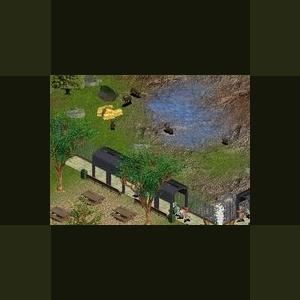About This File
Alpine Ibex by Paardjee
A different species of ibex for in your zoo.
Alpine ibexes are very cheerfull and lively they'll make your guests very happy
The Alpine Ibex (Capra ibex) commonly called by its French name: bouquetin, by its German name: steinbock, by its Dutch name: steenbok, by its Slovenian name: kozorog, or by its Latin nickname: capricorn—is the species of ibex that lives in the European Alps. The Spanish Ibex (Capra pyrenaica) and the Middle Eastern Nubian Ibex (Capra ibex nubiana) are very close relatives of the Alpine Ibex — the Spanish form is generally considered specifically distinct, but the Nubian is usually considered a subspecies of Alpine Ibex.
Habitat
Being an excellent climber, its habitat is the rocky region along the snowline above alpine forests of the European Alps. They tend to occupy steep, rough terrain at elevations of 6,500–15,000 feet.
Appearance
Male specimens commonly grow to a height of about 1 metre (3 feet) and reach a weight of about 100 kg (220 lb). Females are usually only half the size of males. Apart from size, males can also be distinguished by their prominent beard. Older males will tend to grow beards under their chin. Both male and female ibexes have large, backwards-curving horns although those of the male are substantially larger and can grow to an impressive length of up to 1 m. These horns are used to defend themselves from predators such as wolves, lynxes, bears and foxes. Small kids may also be susceptible to attacks from large predatory birds such as eagles. The Ibex has a brownish grey colouring in the summer which changes during the winter months to a richer, darker brown. It is related to the Nubian and Siberian ibexes.
Foraging behaviour
Ibexes are strictly herbivorous and survive on a diet of grass, moss, flowers, leaves and twigs. If leaves and shoots are out of reach, Ibexes often stand on their rear legs to reach this food. They eat during late afternoon and evening hours, descending at this time from the high steep cliffs and into the lower alpine meadows below. The rest of the day is spent in the higher altitude of the cliffs and hills. This pattern of remaining at higher altitudes during the bright daylight hours helps protect them from predators who do not inhabit such high terrain. In the winter, Ibexes also tend to live at lower altitudes since food is more scarce. The need to drink every few days in the summer causes the Ibexes to seek permanent residence within proximity to a dependable water source during this season. If predators are after them, Ibexes will hide in the rocks of the steep cliffs.
Updated 2010-10-30
Just to save space with less in zip and smaller image.
Nothing new.



Recommended Comments
There are no comments to display.
Create an account or sign in to comment
You need to be a member in order to leave a comment
Create an account
Sign up for a new account in our community. It's easy!
Register a new accountSign in
Already have an account? Sign in here.
Sign In Now